The Many Other Ways
So many changes. In so many areas. Many of which dont seem relevant to our jobs. But if we look back well see how many seemingly irrelevant innovations have indeed wormed their ways into our and our customers business. Users have constantly unestimated the effect of new technology.
One Ringy-Dingy
Back in the dawn of time, the telephone was a new and seemingly unimportant innovation (Western Union turned it down). Indeed, in 1876, the head of the British Post Office (who dealt with snail mail, the telegraph and other cutting-edge technologies) had this to say about the emerging telephone: The Americans have need of the telephone, but we do not. [Because] we have plenty of messenger boys.
The financial institutions on the British Wall Street all used couriers to move documents among themselves, and the speed of physical delivery was just fine for the way they did business. Until the first day that the second firm got a newfangled telephone. Those firms new competitive advantage changed the rules for their entire industry.
The telephone then unexpectedly went on to change the rules for every industry and business and interpersonal interactionwhich demonstrates the potential value of keeping abreast of a wide range of innovations. Any one of us might be able to turn an insignificant idea into a competitive advantage that puts us on top.
Its Flu Season
Viruses such as those that cause the flu have rarely been our allies; theyre generally things to avoid. But scientists have recently been taming viruses to do our bidding in many ways, such as acting as carriers for drugs that explicitly target certain types of cells (think cancer).
But its not just about biology. Suppose a device needed long ultra-thin nylon-like fibers to work. We might be able to produce these using conventional means, but wouldnt it be simpler and less expensive to dump some stuff into a beaker and then simply pluck the finished fiber out?
Thats exactly what scientists at MIT have done; the stuff they drop in are billions of viruses which automatically self-assemble into a white fiber having the strength of nylon. Depending on the type of virus and the materials in the solution, the result can be one of a number of crystalline nano-elements that may improve batteries, solar cells and the like, opening up previously impossible solutions.
Power Sandwich
Speaking of fibers, a power sandwich isnt the newest lunch fad for the in-crowd, but a rather interesting fiber with a complex inner structure of nano-sized patterns. Unlike normal fibers, these fibers might act as high-capacity batteries or solar cells that, when woven into cloth or other materials, could power your cell phone or some remote device. As the military sees it, active clothing might power the growing number of electronic devices that the well-dressed soldier already carries. (Its so uncool for a soldier to have to change a night-vision or other battery while the bullets whiz by.)
Perhaps well find made by viruses tags replacing todays common made in China tags...
Technological Escalation
This is the perennial game in which one group deploys a new technology for a certain purpose, and then a different group, dissatisfied with the original use, develops countermeasures to usurp the original technologys intent.
Examples include:
- CSS (the encryption technology used on commercial movie DVDs) was broken after three years by then- 16-year old Jon Lech Johansen);
- Radar speed detectors countered by radar detectors, leading to laser speed detectors countered by laser detectors, etc.);
- Computer viruses followed by anti-virus software followed by new viruses, ad nauseam;
- Apples iPhone. It locked out third-party utilities and only operated with one carrier (AT&T in the U.S.).
Needless to say, it took only days for hackers to breach the iPhones battlements. Although Apple unseated some of these alterations with the iPhones first software update, Im sure that someone will identify a key for every new lock.
Tag, Youre Not It!
Finally, this is a particularly interesting example of technological escalation because it holds the seeds for many new usesit stems from car pool lanes.
These faster lanes are typically restricted to use by cars carrying a minimum of two or three occupants. But many single drivers tried to cut in line using cardboard cutouts of people in the right seat, but the police caught on fast. Then it was inflatable dummies, which are more difficult for someone to detect as the cars whiz by. Now companies such as Vehicle Occupancy offer technological solutions to counter the dummies.
Dtect is the companys occupancy detection system that looks like the typical cameras that dot our roads and toll booths. But this one is different. Positioned along a car pool lane, the dtect looks through a passing cars windshield and counts the number of faces in the car.
Two beams of infrared light, each at a different wavelength, illuminate the interior of the vehicle while the dtect snaps a picture at each wavelength. These are processed to detect human facial features, and whether or not the face is composed of living skin (it analyzes the water and hemoglobin content of the faces skin). Non-living faces, warm bladders within a dummys face, or even the face of your pet dog will trigger the recording of normal evidence photos while virtually tapping the policepersons shoulder.
Spokesmen for Vehicle Occupancy say the 90%-accurate process works regardless of weather, ethnicity of the driver, or the ambient temperature, and isnt phased by wigs, cosmetics, etc. It also works through various specialized windshield glasses.
Of course I wouldnt bet on how long it will take before the next wave of technological escalation raises the detection bar to yet new levels
The Many Other Ways
The point of this discussion is not to focus on these examples, but to encourage us to ponder the myriad ways that a constant stream of innovations might be used for new out- of-the-box competitive advantages: seriously significant competitive advantages.
Might these innovations or what they lead to affect you?
Remember the telephone and the cell phones that followed them...
Dont Blink!
Jeffrey Harrow, Principal Consultant
The Harrow Group

